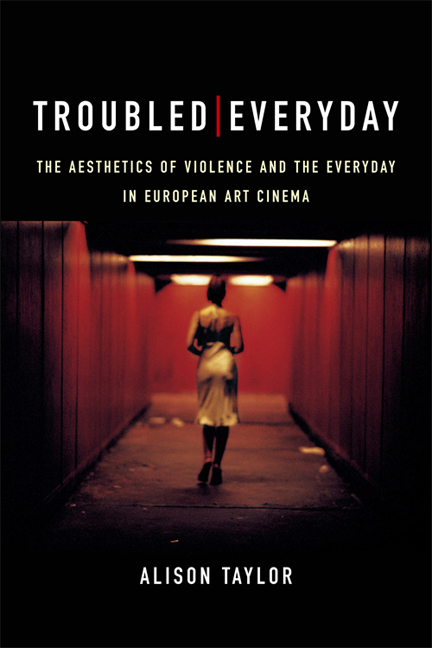5 - Return to the Everyday
Published online by Cambridge University Press: 22 December 2017
Summary
In our ordinary experience of the world, nothing outside of us singles out for our attention the most significant aspects of, and patterns in, the space-time slices we perceive. Nothing presents us with the telling close-up or the synoptic long shot, and nothing cuts the moments of perception into a segmented, transparent ribbon that adheres to a ‘dramatic logic’ in the visible action. For this reason, the phenomena we witness often appear to us as puzzling, indeterminate, ambiguous, and without a guiding structure. This is a fundamental truism about our fragile perceptual connection to the world and, as a fact about our universal limitations as perceivers, it is one that has the deepest human consequences. (George M. Wilson, Narration in Light, 90)
After the mystery at the heart of George Sluizer's 1988 film The Vanishing has been resolved, and the film's protagonist has been murdered, that is, after the disruptions to the everyday, we see a return to it. In the film's final moments, the camera at ground level on a lawn focuses on a praying mantis clinging to a blade of grass, before tracking and tilting upwards to capture housewife Simone who waters plants with a watering can. She turns her head momentarily to glance at her children playing in the garden. We then see her husband Raymond in repose, his expressionless face propped up by his hand, mind seemingly elsewhere, a book abandoned by his side. This imagery of a relaxed weekend at home is set against the preceding scene in which the film's protagonist, Rex, awakens in the darkness of a makeshift coffin to realise that Raymond has buried him alive. The live burial is horrifying: we watch Rex alternate between futile screams and hysterical laughter as the flame of his cigarette lighter tapers out. But perhaps more troubling here is the juxtaposition of these shots with others depicting a family at rest. In part this pertains to the discrepancy between our awareness as to what Raymond has done, what lies under this earth, and his family's blissful ignorance. But bound up in this is the sense that, in spite of what we have just witnessed, this family will carry on as they always have, and that the rhythms of daily life will persist unabated.
- Type
- Chapter
- Information
- Troubled EverydayThe Aesthetics of Violence and the Everyday in European Art Cinema, pp. 89 - 116Publisher: Edinburgh University PressPrint publication year: 2017



